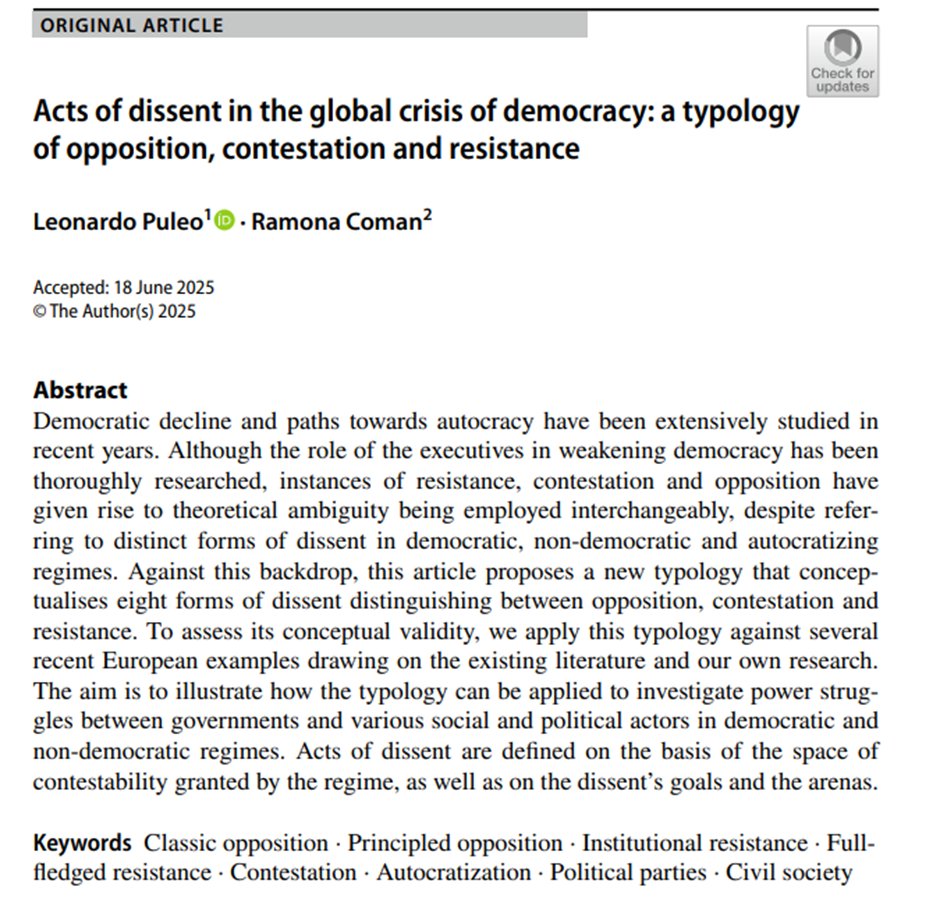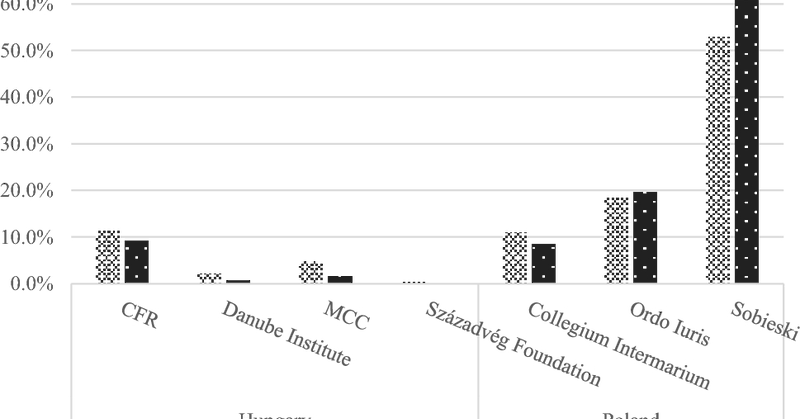
Leonardo Puleo
@LeonardoPuleo
Followers
420
Following
589
Media
26
Statuses
305
Postdoc at the @ucdpolitics - Researching on challenger parties, voting behaviour and illiberal ideas
Joined June 2011
🧩 Our article contributes by: 👉 Showing why “family rivals” can survive & thrive side by side. 👉 Highlighting the strategic role of non-core issues in intra-family competition. 👉 Refining the toolkit of issue competition & contagion – also at minimal ideological distance. 7/N
1
0
0
Findings: ➡️ Peripheral competition dominates, especially among radical right parties. ➡️ Differentiation shows more in positioning than in salience. ➡️ Leaders’ mutual attacks target non-core issues. 5/N
1
0
0
Mirror parties share an ideological core & compete for similar constituencies. We argue they mostly engage in ideologically peripheral competition: ✔️ aligned on core issues ✔️ differentiated on non-core ones 3/N
1
0
0
Final output of the @frsFNRS-funded JUSTICE project (@RamonaComan1, @IEE_Bruxelles #Cevipol). My first post-PhD project—I learnt a lot and grew as a researcher! We had fun & published on rule of law challenges in @democ_journal @EEPolitics @EurJRR @EPSJournal /END
0
0
1
3️⃣ Finally, existing models often classify dissent based only on how radical the means are. We argue that the principled, and collective-oriented nature of dissenters’ goals can have a deeper impact on public opinion, increasing the chances of success for acts of dissent. 9/N
1
0
0
2️⃣ By defining opposition, contestation, and resistance as relational concepts, our typology can also serve explanatory goals. It helps explain how choices made by governments can expand or shrink the repertoire of dissenters—raising or lowering the likelihood of resistance. 7/N
1
0
0
🧩 The typology offers three key contributions: 1️⃣ It links various forms of opposition, contestation, and resistance—providing a novel framework to analyse and map interactions among multiple dissenting actors. 6/N
1
0
0
We use "Acts of dissent" as an umbrella concept, including: • Classical/principled opposition and (principled) contestation (open patterns of contestability). • Systemic opposition, sectoral contestation, institutional & full resistance (contestability reduced or closed). 5/N
1
0
0
Why does this matter? As autocratization unfolds globally, dissent comes from citizens, parties, social movements, civil servants, judges, CSOs, etc. We need a framework that accounts for the agency and the goals of both dissenters and those in power—across different arenas. 4/N
1
0
0
Our article develops a new typology of dissentgrounded in political science, theory, and sociology. We distinguish 8 types of dissent based on: • the space of contestability • the goals of dissenting actors • the arena (institutional or extra-institutional) 3/N
1
0
0
Terms like opposition, contestation, and resistance are often used interchangeably—but they shouldn’t be. Not all forms of dissent are the same. Lumping them together risks missing the distinct challenges and opportunities faced by dissenting actors. 2/N
1
0
0
1
4
6
On a personal note: I'm especially proud of this paper. We aimed to blend rigorous research with a contribution that helps decode the cultural scaffolding of illiberalism. Gramsci (and Bourdieu) remain essential—to understand and to resist this reactionary wave. 9/N
1
0
0
Illiberal think tanks in Poland and Hungary aren't just policy machines—they’re constructing a cultural counter-hegemony, tapping intellectual networks and academic legitimacy to reshape democratic discourse, extending beyond national borders. 8/N
1
0
0




